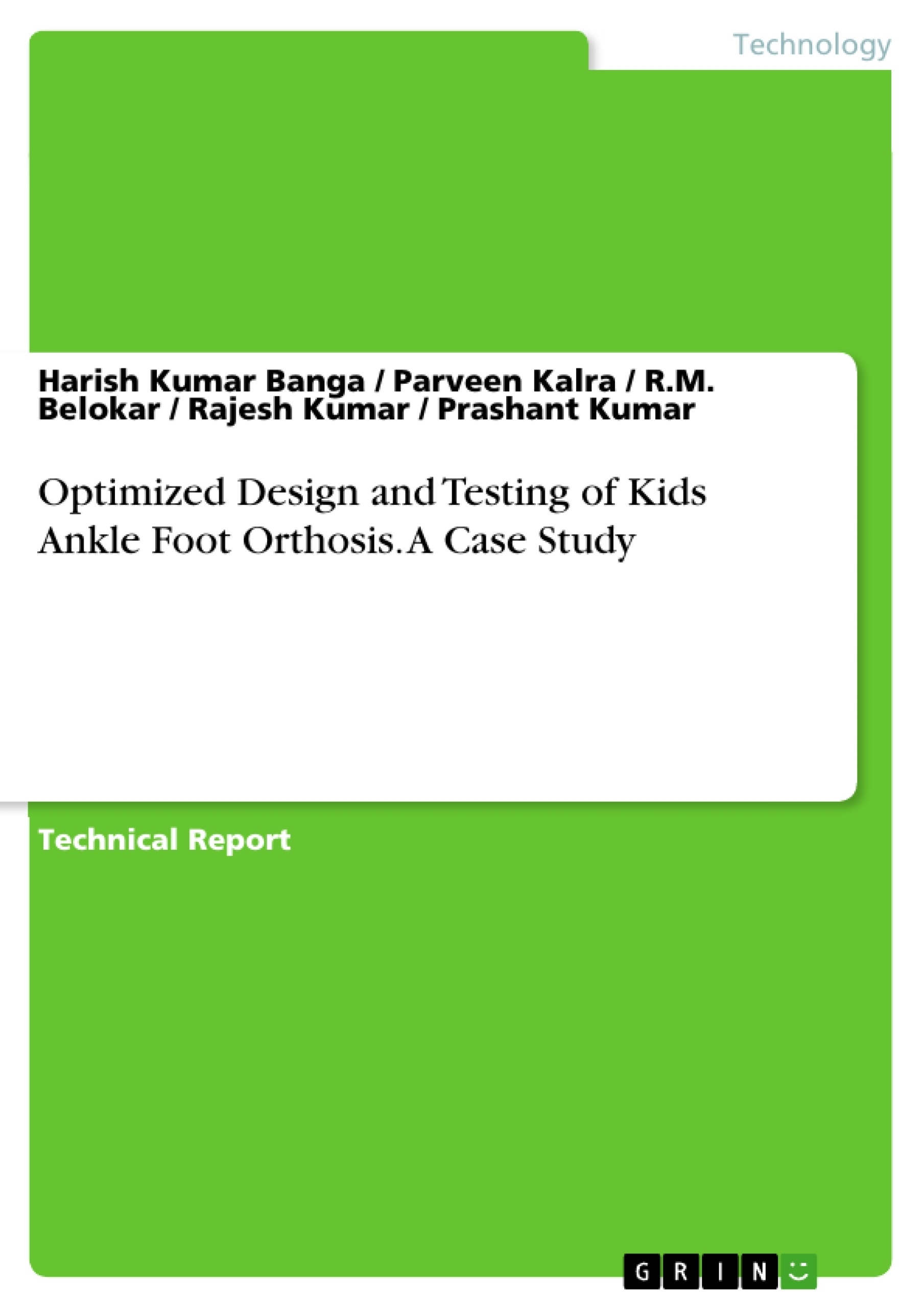Ankle foot orthosis (AFO) are externally applied device that a reused to support as well as control the foot and ankle joint of patients having foot deformity. Foot drop is caused by a deficiency in the ankle joint in which results in the weakness of ankle and toe dorsiflexion. This research proposes a new approach to design and performance evaluation of AFO fabrication that utilizes modeling, simulation and analysis software (like Open Sim, Ansys Work bench & Solid work) and additive manufacturing technologies to customize the fit form to an individual. By implementing a carbon fibre strut at ankle joint the design will result in a stronger, more comfortable, more flexible AFO that can adaptively constrain ankle movement for various different activities.
GAIT Analysis was performed on six patients having foot drop, from the emotion analysis system in the GAIT lab. The data from the GAIT lab was then imported into the Open Sim to create a biomechanics simulation to extract the joint angle and joint moments. These value of ankle angle and moment with & without AFO was compared with normal value. The results show a considerable effect of the use of the AFO by drop foot patients in terms of ankle angle and ankle moments. Furthermore, the muscular analysis in terms of activation and forces also suggest that the dorsiflexors are assisted by the AFO during GAIT and the activation of the plantarflexion are considerably less during the lifting of the foot of the ground.
Table of Contents
- INTRODUCTION
- MATERIAL AND METHODS.
- ANALYSIS OF VARIANCE(ANOVA).
- RESULT
- FUTURESCOPE..
Objectives and Key Themes
This research aims to develop and evaluate an optimized Ankle Foot Orthosis (AFO) design for patients suffering from drop foot. It utilizes advanced modeling, simulation, and additive manufacturing techniques to customize the AFO for improved comfort, fit, and functional effectiveness.
- Optimization of AFO Design for Drop Foot Patients
- Biomechanical Analysis of Gait in Drop Foot Patients
- Application of Modeling and Simulation Software for AFO Design
- Evaluation of AFO Effectiveness through Gait Analysis
- Utilization of Additive Manufacturing Techniques for Customized AFO Fabrication
Chapter Summaries
- INTRODUCTION: This chapter provides a comprehensive overview of Ankle Foot Orthoses (AFOs), outlining their purpose, types, and the biomechanical principles underlying their function. It delves into the specific challenges of drop foot, highlighting its impact on gait and the need for effective treatment options. The chapter discusses the shortcomings of existing AFO designs, particularly in terms of size, weight, and power requirements, motivating the development of a new, optimized AFO solution.
- MATERIAL AND METHODS: This chapter outlines the methodology employed in the research, focusing on the statistical methods used to assess the significance of the findings. Two primary approaches are presented: Analysis of Variance (ANOVA) and Orthogonal Array testing. The chapter explains the rationale behind choosing these methods and their application in evaluating the effectiveness of different AFO designs.
- ANALYSIS OF VARIANCE(ANOVA): This chapter delves into the specific application of ANOVA in the context of AFO design and evaluation. It likely explores the use of ANOVA to test the statistical significance of various design factors, such as the material properties, dimensions, and configuration of the AFO. The results of the ANOVA analysis might reveal which design parameters have the most significant impact on the overall performance and effectiveness of the AFO.
- RESULT: This chapter presents the key findings of the research, showcasing the results of the AFO design optimization process. It likely includes details about the optimized design parameters, such as material selection, strut configuration, and overall dimensions, along with their impact on gait biomechanics and functional effectiveness. This chapter would likely also include comparisons of the optimized AFO to existing designs, highlighting its advantages and the improvement in patient outcomes.
Keywords
The primary keywords encompassing this research are: Ankle Foot Orthosis, Drop Foot, Gait Analysis, Biomechanics, Optimization Techniques, Additive Manufacturing, Carbon Fiber, Teguchi Method, and Statistical Significance.
- Quote paper
- Dr. Harish Kumar Banga (Author), Parveen Kalra (Author), R.M. Belokar (Author), Rajesh Kumar (Author), Prashant Kumar (Author), 2019, Optimized Design and Testing of Kids Ankle Foot Orthosis. A Case Study, Munich, GRIN Verlag, https://www.grin.com/document/507068



